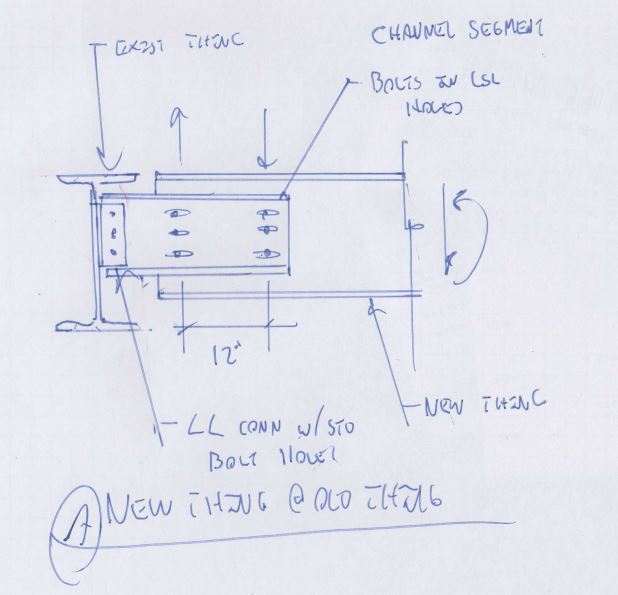MGaMart
Structural
- Aug 23, 2016
- 50
For slip critical connection, I always call off a "NO PAINT" requirement at the bolt line to ensure the appropriate surface class is maintained. When dealing with connections attaching to existing steel, I always provided horizontal long slots for erection allowance. If I were to have a hz long slotted shear connection where the bolts are subject to eccentricity effects, does the connection get forced into a slip critical condition (i.e. requiring the "NO PAINT" requirement)? I guess the question becomes is the connection still defined as bearing, as a moment due to eccentricity imposes a force couple on the bolts. The vector sum of the force is then not perpendicular to the longitudinal axis of the long slot. How's my reasoning on this? To be on the safe side, a "NO PAINT" labelling should be included, but is it truly required? (NOTE that when either slip critical or long slotted connections are used, the bolts are always pretensioned). Feel free to point me to any literature on the subject.


![[tongue] [tongue] [tongue]](/data/assets/smilies/tongue.gif)
